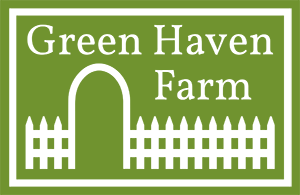Give Caterpillars a Soft Landing
Providing habitat under trees…
Including native trees in your landscape (especially “Keystone” species) is a huge benefit to caterpillars, which in turn help our native bird populations. You can help support those caterpillars even more by providing a soft landing around the base of the trees.
When a caterpillar eats its fill of tree leaves and is ready to make the transition to a moth or butterfly, most of the time it will drop to the ground to pupate. In normal woodland conditions, ground covering plants and leaf litter provide shelter and keep the ground soft enough to allow caterpillars to burrow in. They can complete their life cycle in a protected environment.
Lawn turf under trees (which requires repeated mowing) or even wood mulch does not provide the protection the caterpillars need – exposing them to the elements and to excess predation.
Soft landings can be created by replacing turf or mulch with a collection of native plants under the trees. In addition to plants, soft landings also include leaf litter, duff, and plant debris which naturally collect as trees shed their leaves in the fall.
These soft landings not only prevent lawnmowers from running over pupating butterflies and moths, but they also provide habitat for other beneficial insects such as bumblebees, lightning bugs, lacewings, and beetles.
If you are planting a tree, you can easily install “soft landing” plantings at the same time, allowing the plant area to expand as the tree grows.
If you currently have a tree and would like to install a soft landing around it, here are a few things to think about.
It is important to protect the existing tree from root damage. Do not cultivate or dig to remove the turf grass. Try smothering the existing turf instead. Wet newspaper several sheets thick and covered with no more than 2 inches of mulch or compost often works well. Start 12-18 inches from the tree trunk. Do not pile mulch against the trunk. Depending on what is growing under the tree, it can take a few weeks to a couple months to smother the growth.
You can also use newspaper with a thicker layer (about 6 inches) of leaves in the fall – for planting in the spring.
Never place a raised bed around the base of a tree. The tree roots need to breathe and piling soil on top can smother them, causing damage and potentially death of the tree.
When planting, choose small plants (quart size or smaller) that can be planted around the existing tree roots, minimizing damage. Plant right through the newspaper and mulch, leaving it in place between the plants. Because these small plants will be competing with existing tree roots, you will need to monitor moisture and water until they are established.
To maintain your new planting, allow the tree leaves to naturally collect in the planting in the fall. Not only will this provide habitat and conserve moisture, but will save you work as well!
There are many native plants that can thrive as part of a “soft landings” planting. What you chose will be based on the sun and moisture conditions of you site as well as your personal preferences. Here is a list of a few to consider.
Adiantum pedatum – Maidenhair fern
Anthyrium filix-femina – Lady Fern
Aquilegia canadensis - Wild Columbine
Asarum canadense - Wild Ginger
Carax spp. - Native Carax species
Eurybia divaricata - White Wood Aster
Geranium maculatum - Wild Geranium
Mertensia virginica - Virginia Bluebells
Phlox divaricata - Wild Blue Phlox
Polemonium replans - Jacob's Ladder
Polygonatum biflorum - Solomon's Seal
Polystichum acrostichoides – Christmas fen
Solidago caesia - Blue-stemmed Goldenrod
Symphyotrichum cordifolium - Heart-leaved Aster
Symphyotrichum lateriflorum - Calico Aster
Tiarella cordifolia - Foamflower
Viola ssp. Native Violets
Want to learn more? Here are some links:
Soft landings page by Heather Holms – includes more extensive plant list.



